
The National Gallery of Art is an art museum in Washington, D.C., United States, located on the National Mall, between 3rd and 9th Streets, at Constitution Avenue NW. Open to the public and free of charge, the museum was privately established in 1937 for the American people by a joint resolution of the United States Congress. Andrew W. Mellon donated a substantial art collection and funds for construction. The core collection includes major works of art donated by Paul Mellon, Ailsa Mellon Bruce, Lessing J. Rosenwald, Samuel Henry Kress, Rush Harrison Kress, Peter Arrell Browne Widener, Joseph E. Widener, and Chester Dale. The Gallery's collection of paintings, drawings, prints, photographs, sculpture, medals, and decorative arts traces the development of Western art from the Middle Ages to the present, including the only painting by Leonardo da Vinci in the Americas and the largest mobile created by Alexander Calder.

The Hirshhorn Museum and Sculpture Garden is an art museum beside the National Mall in Washington, D.C., United States. The museum was initially endowed during the 1960s with the permanent art collection of Joseph H. Hirshhorn. It was designed by architect Gordon Bunshaft and is part of the Smithsonian Institution. It was conceived as the United States' museum of contemporary and modern art and currently focuses its collection-building and exhibition-planning mainly on the post–World War II period, with particular emphasis on art made during the last 50 years.
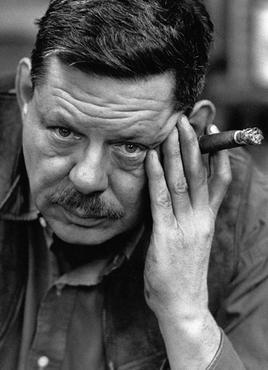
Roland David Smith was an influential and innovative American abstract expressionist sculptor and painter, widely known for creating large steel abstract geometric sculptures.

David Vincent Hayes was an American sculptor.

Clement Meadmore was an Australian-American furniture designer and sculptor known for massive outdoor steel sculptures.
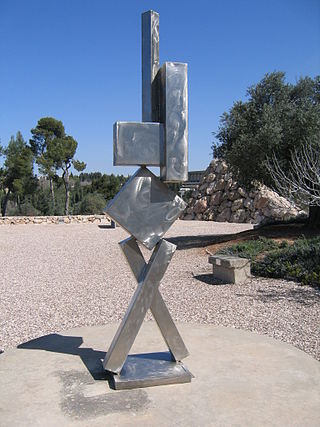
The Cubi series is a group of stainless steel sculptures built from cubes, rectangular solids and cylinders with spheroidal or flat endcaps. These pieces are among the last works completed by the sculptor David Smith. The artist died in a car accident on May 23, 1965, soon after the completion of Cubi XXVIII, which may or may not have been the last sculpture he intended to create in this series. The Cubis are among Smith's final experiments in his progression toward a more simplified, abstract form of expression. As an example of Modernism, these are representative of the monumental works in industrial materials that characterized much of the sculpture from this period.
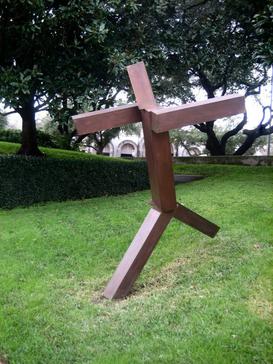
Joel Elias Shapiro is an American sculptor renowned for his dynamic work composed of simple rectangular shapes. The artist is classified as a Minimalist as demonstrated in his works, which were mostly defined through the materials used, without allusions to subjects outside of the works. He lives and works in New York City. He is married to the artist Ellen Phelan.
Chakaia Booker is an American sculptor known for creating monumental, abstract works for both the gallery and outdoor public spaces. Booker’s works are contained in more than 40 public collections and have been exhibited across the United States, Europe, Africa, and Asia. Booker was included in the 2000 Whitney Biennial, received a Guggenheim Fellowship in 2005, and an American Academy of Arts and Letters Award for Art in 2001. Booker has lived and worked in New York City’s East Village since the early 1980s and maintains a production studio in Allentown, Pennsylvania.
Bryan Hunt is an American sculptor who was born in Terre Haute, Indiana on June 7, 1947. His family moved to Tampa, Florida in 1955. He worked at the Kennedy Space Center as an engineer's aide and draftsman, 1967–1968, during the NASA Apollo Program. In 1968, he moved to Los Angeles to enroll in the Otis Art Institute, where he received a BFA in 1971.

Love is a pop art image by American artist Robert Indiana. It consists of the letters L and O over the letters V and E in bold Didone type; the O is slanted sideways so that its oblong negative space creates a line leading to the V.

Claes Oldenburg was a Swedish-born American sculptor best known for his public art installations, typically featuring large replicas of everyday objects. Another theme in his work is soft sculpture versions of everyday objects. Many of his works were made in collaboration with his wife, Coosje van Bruggen, who died in 2009; they had been married for 32 years. Oldenburg lived and worked in New York City.

Bernard J. Rosenthal, also known as Tony Rosenthal, was an American abstract sculptor widely known for his monumental public art sculptures, created over seven decades.

Throwback is a public artwork by American artist Tony Smith, located at the Hirshhorn Museum and Sculpture Garden in Washington, D.C., United States. This version is the third of an edition of three in the series with one artist's proof.
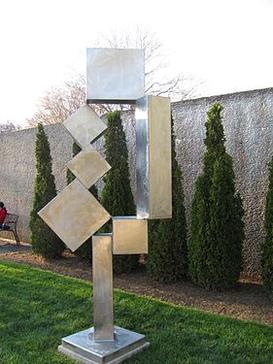
Cubi XII is an abstract sculpture by David Smith.
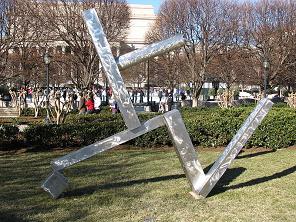
Cubi XXVI is an abstract sculpture by David Smith, in the National Gallery of Art Sculpture Garden in Washington, D.C., US.

Cubi XI is an abstract sculpture by David Smith. It is a part of the Cubi series of sculptures.

Ronald Bladen was a Canadian-born American painter and sculptor. He is particularly known for his large-scale sculptures. His artistic stance, was influenced by European Constructivism, American Hard-Edge Painting, and sculptors such as Isamu Noguchi and David Smith. Bladen in turn had stimulating effect on a circle of younger artists including Carl Andre, Donald Judd, Sol LeWitt and others, who repeatedly referred to him as one of the 'father figures' of Minimal Art.

Modern sculpture is generally considered to have begun with the work of Auguste Rodin, who is seen as the progenitor of modern sculpture. While Rodin did not set out to rebel against the past, he created a new way of building his works. He "dissolved the hard outline of contemporary Neo-Greek academicism, and thereby created a vital synthesis of opacity and transparency, volume and void". Along with a few other artists in the late 19th century who experimented with new artistic visions in sculpture like Edgar Degas and Paul Gauguin, Rodin invented a radical new approach in the creation of sculpture. Modern sculpture, along with all modern art, "arose as part of Western society's attempt to come to terms with the urban, industrial and secular society that emerged during the nineteenth century".













